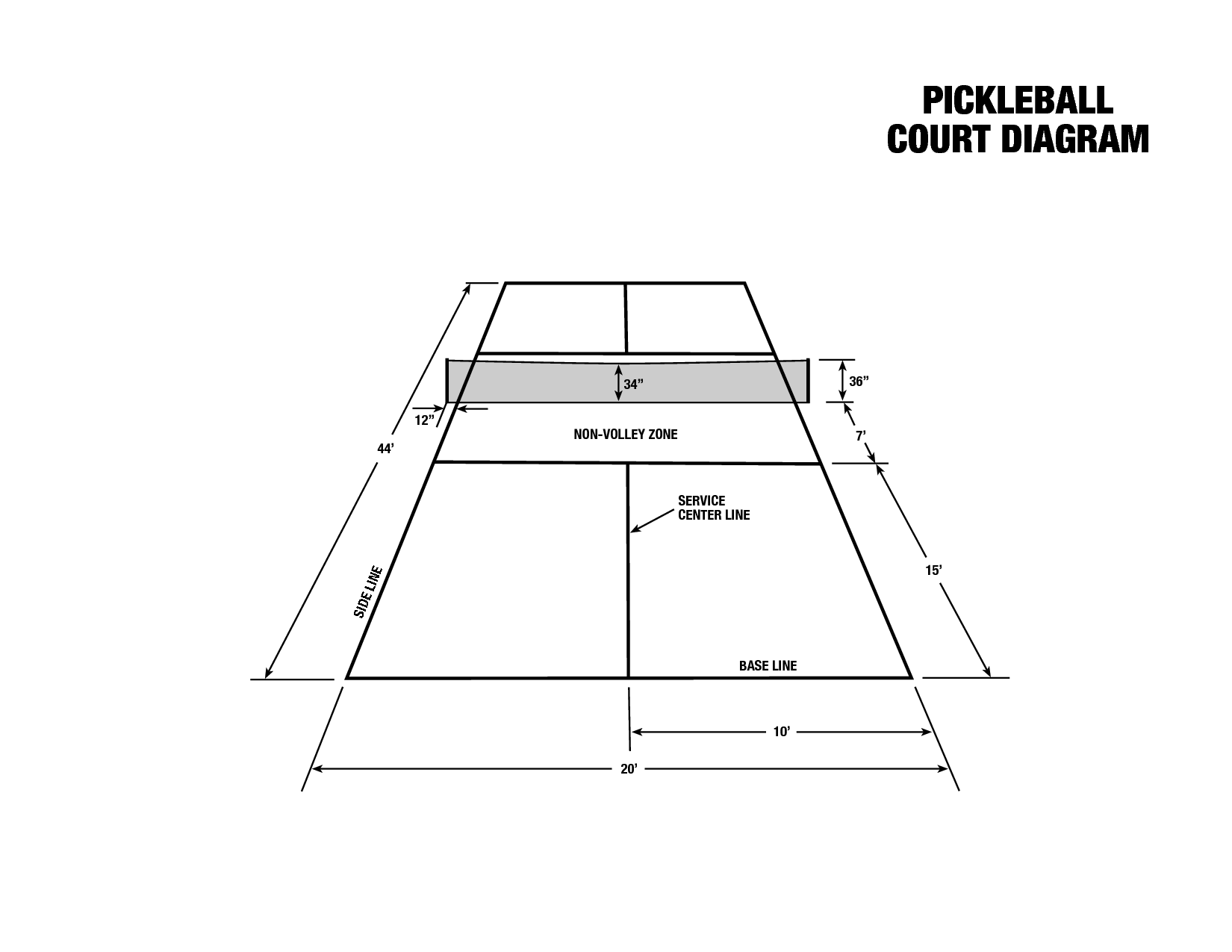Before we move onto the pickleball court dimensions, let’s first get to know what is pickleball.
What is Pickleball?
This is a type of sport in which a maximum of four players or a minimum of two players use wood made paddles or similar grade tools to hit a punctured polymer ball over a net. And, although the sport is synonymous to other conventional racquet based sports, it does posses some added modifications. For instance, pickleball court dimensions are slightly different than traditional courts and provide better mobility for younger player and players with varying mobility levels.
The game was engendered in mid 1960`s in the home of a prominent government official (Joel Pritchard) in Bainbridge in Washington .This idea was conjured up when he and his comrades returned home one afternoon from their golfing escapades and noticed the impending boredom that loomed within. They then began experimenting with various games and thus created this innovative sport.
You can have a look at the pickleball court layout in the following pickleball court diagram.

Pickleball Court Dimensions
Pickleball Court Dimensions & Measurements
The conventional pickleball court size is analogous to that of a badminton court dimensions. The standard measurements of pickleball court dimensions are rectangular in nature and stand at 44 feet long and 20 feet wide. The center net should entail a height level of 36 inches at the sidelines and 34 inches at the center of the court. This, unlike most racquet games, is particularly beneficial for younger players or players with low mobility. The game has garnered a large following especially as a high school sporting activity as well as outdoor activity. Some of the other components essential for pickleball court dimensions include:
- Baseline – the lines that lie parallel to the net at either end of the court
Sideline -Parallel lines that exist on either side of the court
Center line – this line is one either side of the court and divides the region between the non volley line and the baseline
Non volley line – this line exists on either sides of the net and between the sidelines and is located at 7 feet from the net.
Non volley zone – this region of the court is surrounded by the sidelines, the net and the non volley line.
Service zones -these zones are on each side of the center line and are surrounded by the non volley line, sideline and also the baseline. - Pickleball Strategy
Using a wooden paddle or similar grade material, the ball is served using a gentle upward stroke from behind the baseline with a main goal of getting the ball to the opponents region. Points are made when the opponent fails to follow some of the rudimentary stipulated game rules which include:
Failure to volley the served ball
Serving the ball out of the line bounds
Venturing into the prohibited volley zone
A participant is only allowed to venture into the volley zone to stroke a ball that bounces and may remain in the zone stroke any other balls that bounce. The player must fully exit the volley zone before getting permission to play a volley. The first side to accumulate a total of 11 points with a margin of two points from the opponent wins the game.
The games can also be played to a total of 15 or 21 points as participants switch sides at 8 or 11 point mark for supreme rotation balance. The return ball volley should be allowed to bounce by the server meaning that they are prohibited from actively volleying the stroked ball. For this reason, both the server and his game partner are advised to stay behind the baseline until the first serve has been stroked back with one bounce.
